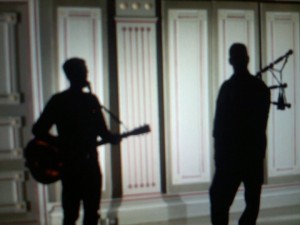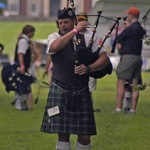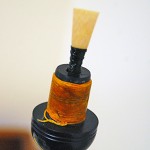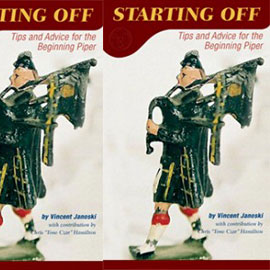How to Tune Your Bagpipes to Other Instruments – Crash Course
 There are lots of crazy explanations out there about what “key” bagpipes are in, and how to tune them to other instruments. Without judging all the things you’ve heard, let me take you through my explanation, which I have put to the test on my two albums, and while jamming with many musicians (most recently, Bryan Adams! :D).
There are lots of crazy explanations out there about what “key” bagpipes are in, and how to tune them to other instruments. Without judging all the things you’ve heard, let me take you through my explanation, which I have put to the test on my two albums, and while jamming with many musicians (most recently, Bryan Adams! :D).
First, a brief, semi-accurate history of why the bagpipe is so darned hard to tune to other instruments:
Originally, the bagpipe scale-notes closely resembled the notes of other mainstream instruments. It may never have exactly matched up to concert pitch, but bagpipes did possess a coherent scale that was ultimately possible to fit into the crazy world of “music theory.” Our “A” was closest to concert “A,” and that’s how it got its name.
Where did concert pitch come from? To my knowledge, it was actually mandated by the church in Rome. Apparently, organists at various churches would attract more members to their church by cranking up the pitch of their organs! By doing this, it produces a psychological effect that makes the music sound better. Needless to say, this got out of hand over time, and eventually the church said “enough is enough,” and required all organs and other instruments involved with the church to play at a set pitch, wherein “A” = 440 hertz (aka vibrations per second).
Meanwhile, back at the ewe pen, bagpipes were undergoing the same phenomenon. Bagpipes that were higher pitched seemed to sound more pleasant, and so pipers began shooting for the sweetest pitch possible. This was never checked by the church (obviously!), and so the bagpipe wandered off on its own, ultimately straying so far from conventional instruments that it became extremely hard to tune to them. Actually, this still happens today in a big way. A great example can be heard on the World Pipe Band Championships CDs. Each year, the pitch of the winning band goes up, I would say, by an average of 1 hz per year.
Fast-forward to today. The bottom line is: Today, the bagpipes have actually increased to be approximately a semi-tone and a half above concert pitch. And, it’s still going! So, our ‘A’ would actually sound somewhere between concert B-flat and concert B. This is where the myth comes from that bagpipes play in the key of B-flat. Not really true. It is possible to think of it this way, but pointless. If you explain to a musician that you actually play a semi-tone and a half above concert pitch, that will make it simple. You can think in your usual notes, and the musician can think in their usual notes as well; ie, there’s no need for anyone to transpose.
So, to tune to other instruments, it’s important that your ‘A’ equals the other player’s ‘A’. A tuner is an excellent aid here, to get the precision you want. For example, a guitarist needs to tune his A string up a semi-tone and a half. Or, they could put a capo on the first fret and tune up half a step. Or, you guessed it – they could put the capo on the second fret and tune down!
Electronic Keyboards can often tweak their tuning. They simply want to adjust the whole thing up a semitone and a half; so that their ‘A’ equals your ‘A.’
You’ll notice you don’t hear many French Horn vs. Bagpipe duos. Or trumpets, or clarinets, flutes, etc. Even most Irish whistles don’t jive with the pipes. This is because there’s really no way to tune them significantly enough to match the bagpipe tuning. Even to just adjust the half-step to reach B-flat is essentially impossible. For projects like this, I would recommend exploring special-made chanters that play at a lower, concert pitch. I think somewhere out there there are A and B-flat chanters.
-
Bill
-
Piper
-
David Evans
-
Jeff Davis
 Pipehacker
Pipehacker







